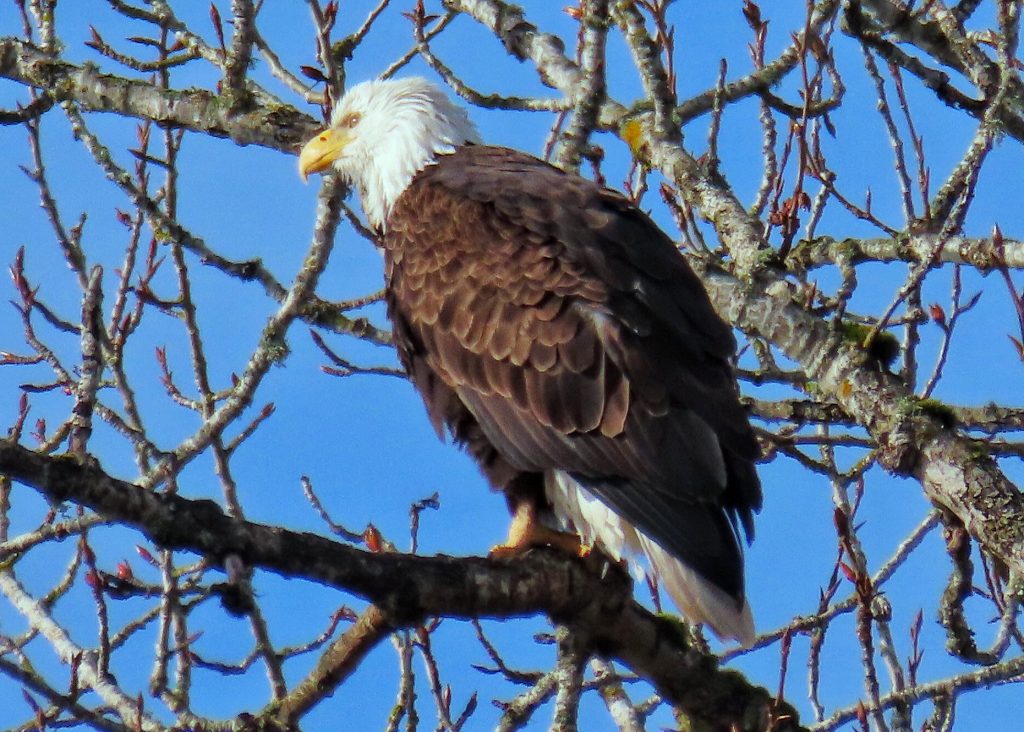
Despite its kleptoparasitic tendencies (which is just one of several reasons why Benjamin Franklin privately didn’t think it was fit to be our national emblem) and penchant for eating carrion, the Bald Eagle is still a striking and regal bird, and a real conservation success story after being pushed to the brink of extinction in the early 70s by the eggshell thinning properties of DDT.
They are primarily fish eating birds, and despite their attempts at stealing from Ospreys, seals, and other birds and mammals, Bald Eagles do hunt fish. I once observed a Bald Eagle, who was eventually joined by its mate, attempt to subdue a huge spawning carp, which probably outweighed both eagles combined. They were ultimately unsuccessful. They also prey on waterfowl, especially in the winter when they are congregated on bays, lakes, and marshes (with a focus on American Coots and birds crippled by hunters), and in the spring they often target the unwary, and flightless or poor flying young.
Mature Bald Eagles are unmistakable, but juveniles can easily be confused with the rarer Golden Eagles, both of them being 2.5-3’ tall. In our region Bald Eagles are the default eagle west of the Cascades, but Goldens are not unknown. East of the Cascades Bald Eagles tend to be found near water, whereas Goldens are birds of open country, but there is significant overlap. Juvenile Bald Eagles tend to be more mottled with white and brown, while Golden Eagles are usually more uniformly brown. In flight one will notice that on juvenile Bald Eagles the white is mostly towards the front of the wing and in the ‘armpit’, but the white is more of a band in the middle of the wing on Goldens. After the first year the eye and beak of the Bald Eagle becomes progressively lighter and yellower, whereas the eye and beak of Golden Eagles remains dark. And, if you can see the leg well, you will notice that the leg of the Golden Eagle is feathered all the way to the claws, while the Bald Eagle’s leg is only feathered partway down.
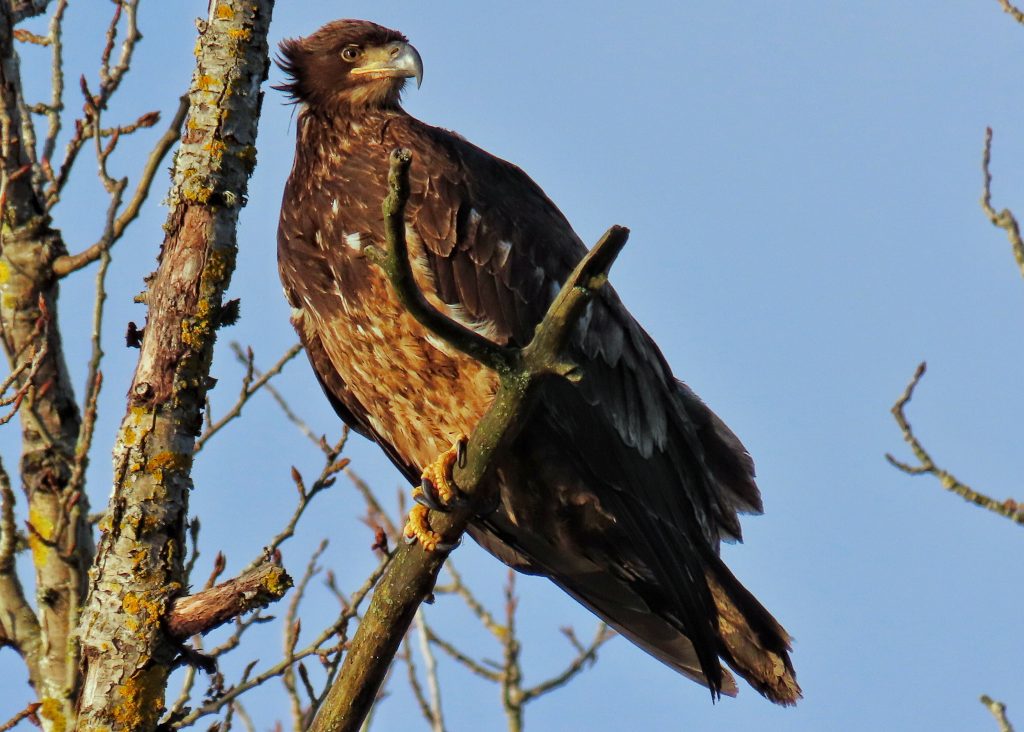
https://www.allaboutbirds.org/guide/Bald_Eagle/overview
https://www.audubon.org/field-guide/bird/bald-eagle
https://www.audubon.org/news/is-golden-eagle-actually-bald-eagle
https://thewildlife.blog/2018/07/11/golden-eagle-or-immature-bald-eagle-heres-how-to-tell/amp/
Size- 2.5-3’ talk
Habitat- Usually found near water
Range- Region wide
Eats- Primarily fish and waterfowl; also consumes carrion when available.
Flight Season- Year around. Greater numbers during migration, and there are winter congregations in the Boise River valley in Idaho, the Klamath Basin in southern Oregon, the Columbia River Gorge, and the Skagit River Delta in Washington, as well as other places.
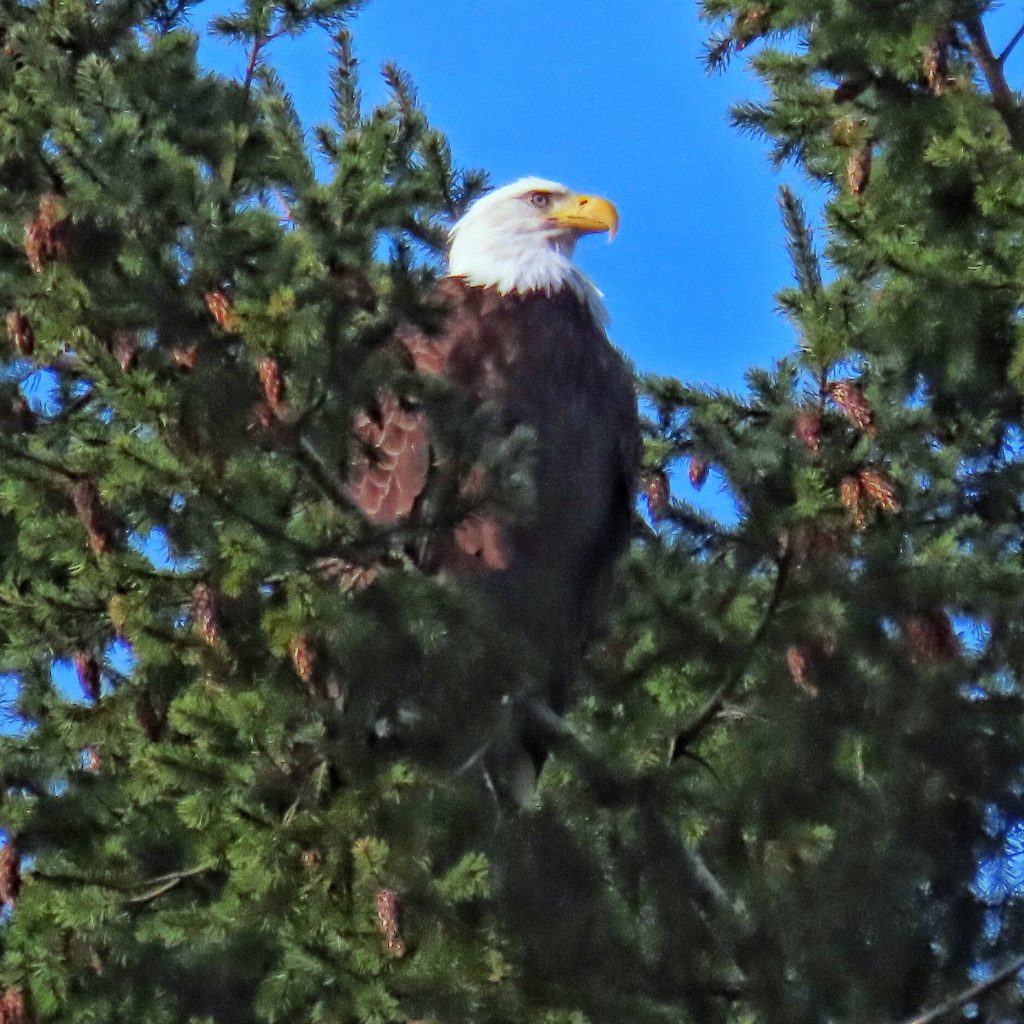
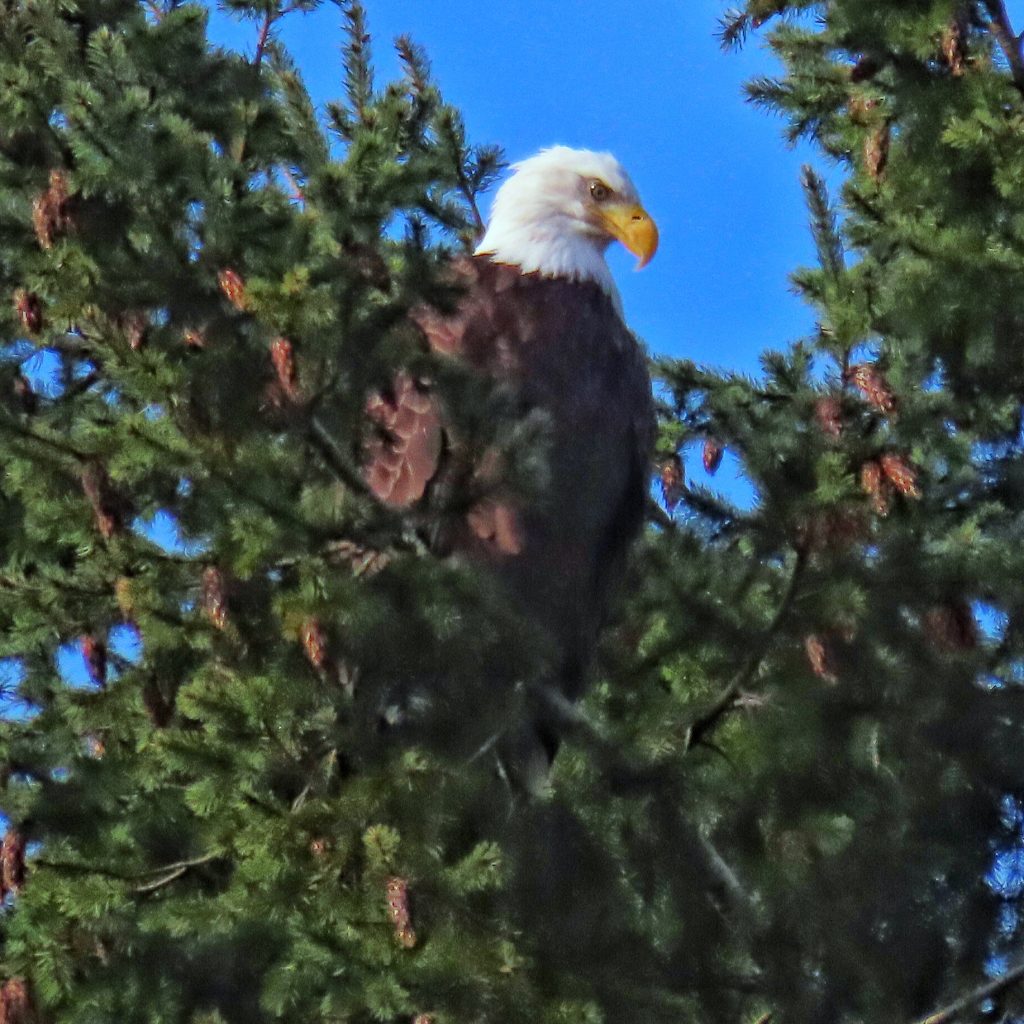
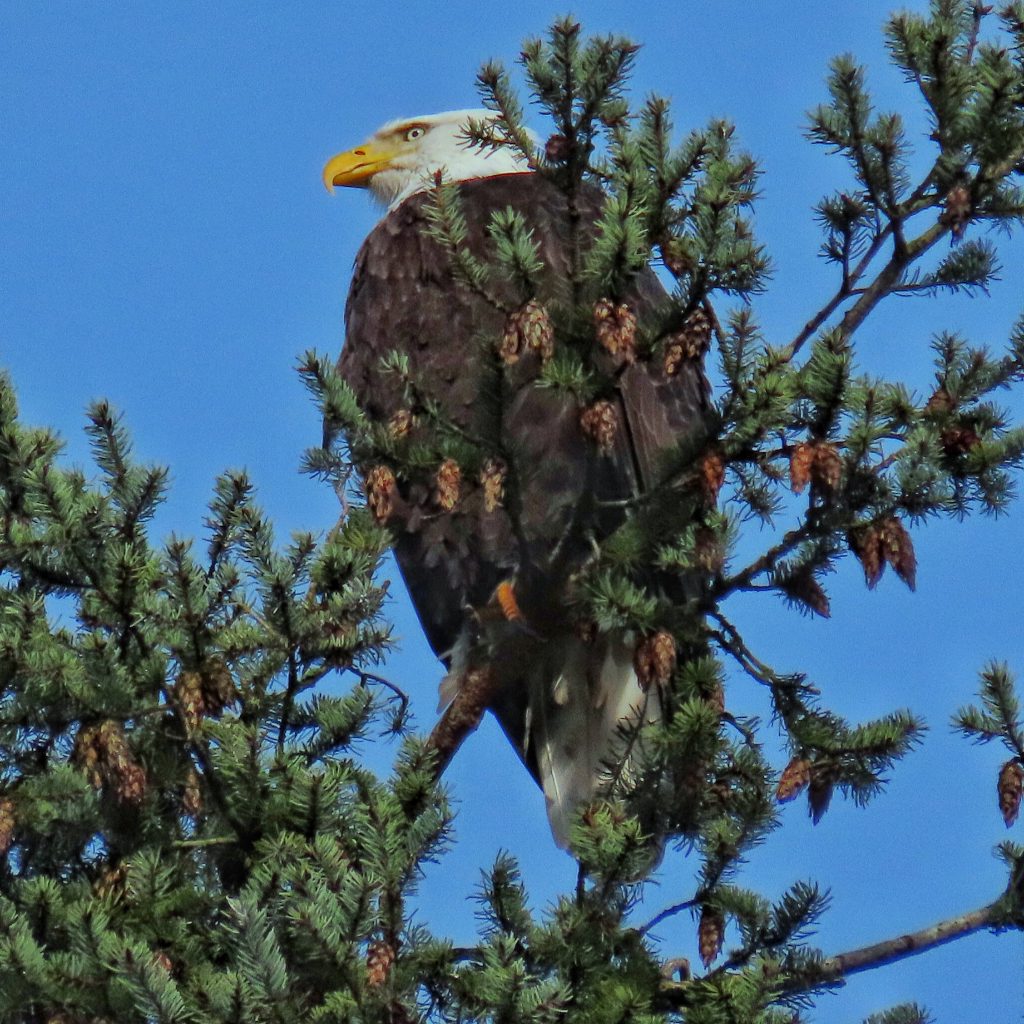
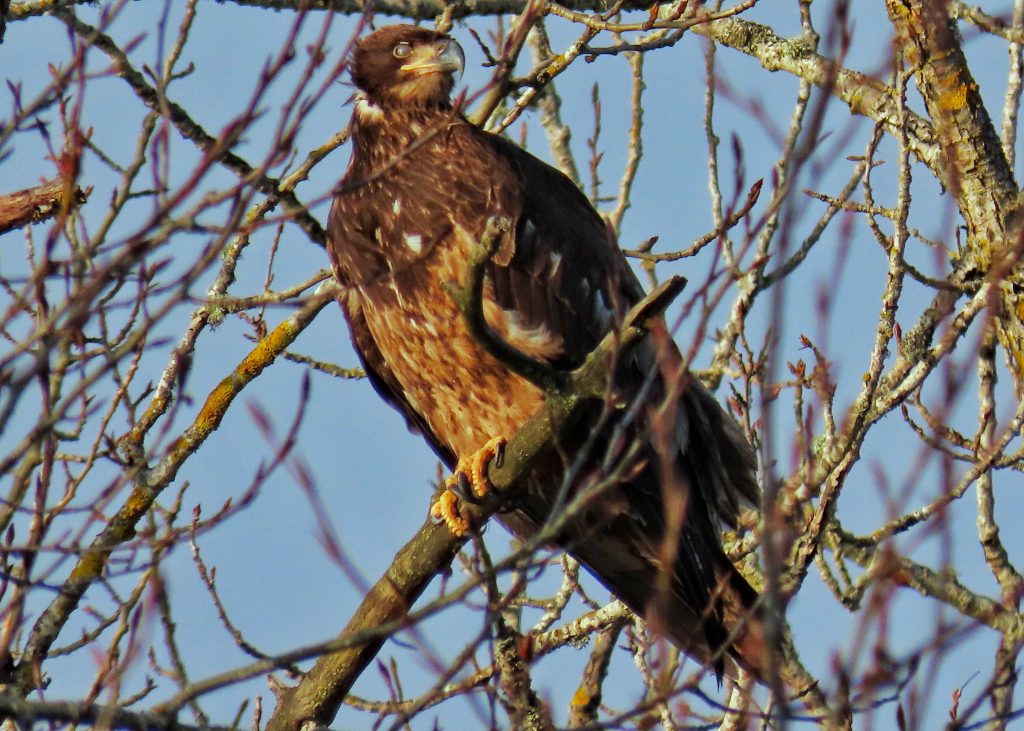
1 thought on “Haliaeetus leucocephalus (Bald Eagle)”